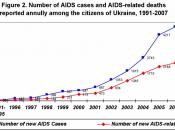Brief History of AIDS and the Criminalization of Knowingly Transmitting It
Acquired Immune Deficiency Syndrome (AIDS) is caused by the Human Immunodeficiency Virus (HIV). The virus was discoverd independently in France in 1983 and in the United States in 1984. In the United States, it was initially identified in 1981. In 1986, a second virus, now called HIV-2, was also discovered in Africa. HIV-2 also causes AIDS.
AIDS is transmitted in three ways: From sexual contact without protection, from the mixing of ones blood with infected blood, and from an infected pregnant woman to her fetus. Infection can occur from blood transfusions of infected blood, or sharing 'dirty' needles. (Needles already used, in this case, by a HIV positive person.)
The criminalization of intentionally spreading AIDS has been a big issue recently, and still remains so. As of September, 1991, legislation criminalizing AIDS transmission has been passed in 24 states.
Among these states are California, Idaho, Ohio, Missouri, Michigan, and South Carolina. Under these current laws, it is a crime to knowingly transmit the virus through sex, sharing needles, donating infected blood, organs, or skin tissue.
The first person to go to court under these laws in Michigan was Jeffrey Hanlon. Hanlon was a gay man who infected another man from Michigan while he was in New York. The American Civil Liberties Union, who agreed to take the case, agrued that the AIDS disclosure law is unconstitutional. Privacy of those with AIDS is what they were worried about. Opponents argued that "they're [those with AIDS] killing people. It's like rape." The maximum sentence Hanlon could have recieved was four years in prison and a $2000 fine.
In addition, under the current New York State law, which dates back well before June, 1987, the knowing transmission of a venerial disease is...


